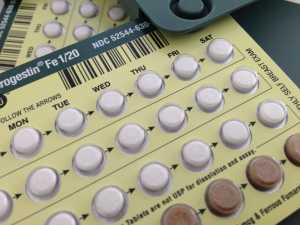Author Interviews, BMJ, Education, Nutrition, Pediatrics, Weight Research / 13.02.2018
School Based Healthy Lifestyle Program Did Not Bend Childhood Obesity Curve
MedicalResearch.com Interview with:
 Peymané Adab, MD
University of Birmingham in England
MedicalResearch.com: What is the background for this study? What are the main findings?
Response: Childhood obesity is an increasing problem worldwide. In the UK, the proportion of children who are very overweight doubles during the primary school years. Furthermore during this period inequalities emerge. At school entry there is little difference in the likelihood of being overweight between groups. However on leaving primary school, children from minority ethnic groups and those from more deprived, compared to more affluent backgrounds are more likely to be overweight. Excess weight in children is linked with multiple health, emotional and social problems. As children spend a lot of time at school, it seems intuitive that they are an ideal setting for prevention interventions.
Although a number of studies have investigated the evidence for school obesity prevention programmes, the results have been mixed and methodological weaknesses have prevented recommendations being made. As a result we undertook a major high quality trial to evaluate an intervention that had been developed in consultation with parents, teachers and the relevant community. The 12 month programme had four components. Teachers at participating schools were trained to provide opportunities for regular bursts of physical activity for children, building up to an additional 30 minutes each school day. There was also a workshop each term, where parents came in to cook a healthy meal (breakfast, lunch of dinner) with their children. In conjunction with a local football club, Aston Villa, children participated in a six-week healthy eating and physical activity programme. Finally, parents were provided with information about local family physical activity opportunities.
We involved around 1500 year 1 children (aged 5-6 years) from 54 state run primary schools in the West Midlands. At the start of the study, we measured their height and weight and other measures of body fat, asked the children to complete a questionnaire about their wellbeing, to note everything they ate for 24 hours, and to wear an activity monitor that recorded how active they were. After this, the schools were randomised to either receive the programme or not. We then repeated the measures 15 and 30 months later.
(more…)
Peymané Adab, MD
University of Birmingham in England
MedicalResearch.com: What is the background for this study? What are the main findings?
Response: Childhood obesity is an increasing problem worldwide. In the UK, the proportion of children who are very overweight doubles during the primary school years. Furthermore during this period inequalities emerge. At school entry there is little difference in the likelihood of being overweight between groups. However on leaving primary school, children from minority ethnic groups and those from more deprived, compared to more affluent backgrounds are more likely to be overweight. Excess weight in children is linked with multiple health, emotional and social problems. As children spend a lot of time at school, it seems intuitive that they are an ideal setting for prevention interventions.
Although a number of studies have investigated the evidence for school obesity prevention programmes, the results have been mixed and methodological weaknesses have prevented recommendations being made. As a result we undertook a major high quality trial to evaluate an intervention that had been developed in consultation with parents, teachers and the relevant community. The 12 month programme had four components. Teachers at participating schools were trained to provide opportunities for regular bursts of physical activity for children, building up to an additional 30 minutes each school day. There was also a workshop each term, where parents came in to cook a healthy meal (breakfast, lunch of dinner) with their children. In conjunction with a local football club, Aston Villa, children participated in a six-week healthy eating and physical activity programme. Finally, parents were provided with information about local family physical activity opportunities.
We involved around 1500 year 1 children (aged 5-6 years) from 54 state run primary schools in the West Midlands. At the start of the study, we measured their height and weight and other measures of body fat, asked the children to complete a questionnaire about their wellbeing, to note everything they ate for 24 hours, and to wear an activity monitor that recorded how active they were. After this, the schools were randomised to either receive the programme or not. We then repeated the measures 15 and 30 months later.
(more…)
 Peymané Adab, MD
University of Birmingham in England
MedicalResearch.com: What is the background for this study? What are the main findings?
Response: Childhood obesity is an increasing problem worldwide. In the UK, the proportion of children who are very overweight doubles during the primary school years. Furthermore during this period inequalities emerge. At school entry there is little difference in the likelihood of being overweight between groups. However on leaving primary school, children from minority ethnic groups and those from more deprived, compared to more affluent backgrounds are more likely to be overweight. Excess weight in children is linked with multiple health, emotional and social problems. As children spend a lot of time at school, it seems intuitive that they are an ideal setting for prevention interventions.
Although a number of studies have investigated the evidence for school obesity prevention programmes, the results have been mixed and methodological weaknesses have prevented recommendations being made. As a result we undertook a major high quality trial to evaluate an intervention that had been developed in consultation with parents, teachers and the relevant community. The 12 month programme had four components. Teachers at participating schools were trained to provide opportunities for regular bursts of physical activity for children, building up to an additional 30 minutes each school day. There was also a workshop each term, where parents came in to cook a healthy meal (breakfast, lunch of dinner) with their children. In conjunction with a local football club, Aston Villa, children participated in a six-week healthy eating and physical activity programme. Finally, parents were provided with information about local family physical activity opportunities.
We involved around 1500 year 1 children (aged 5-6 years) from 54 state run primary schools in the West Midlands. At the start of the study, we measured their height and weight and other measures of body fat, asked the children to complete a questionnaire about their wellbeing, to note everything they ate for 24 hours, and to wear an activity monitor that recorded how active they were. After this, the schools were randomised to either receive the programme or not. We then repeated the measures 15 and 30 months later.
(more…)
Peymané Adab, MD
University of Birmingham in England
MedicalResearch.com: What is the background for this study? What are the main findings?
Response: Childhood obesity is an increasing problem worldwide. In the UK, the proportion of children who are very overweight doubles during the primary school years. Furthermore during this period inequalities emerge. At school entry there is little difference in the likelihood of being overweight between groups. However on leaving primary school, children from minority ethnic groups and those from more deprived, compared to more affluent backgrounds are more likely to be overweight. Excess weight in children is linked with multiple health, emotional and social problems. As children spend a lot of time at school, it seems intuitive that they are an ideal setting for prevention interventions.
Although a number of studies have investigated the evidence for school obesity prevention programmes, the results have been mixed and methodological weaknesses have prevented recommendations being made. As a result we undertook a major high quality trial to evaluate an intervention that had been developed in consultation with parents, teachers and the relevant community. The 12 month programme had four components. Teachers at participating schools were trained to provide opportunities for regular bursts of physical activity for children, building up to an additional 30 minutes each school day. There was also a workshop each term, where parents came in to cook a healthy meal (breakfast, lunch of dinner) with their children. In conjunction with a local football club, Aston Villa, children participated in a six-week healthy eating and physical activity programme. Finally, parents were provided with information about local family physical activity opportunities.
We involved around 1500 year 1 children (aged 5-6 years) from 54 state run primary schools in the West Midlands. At the start of the study, we measured their height and weight and other measures of body fat, asked the children to complete a questionnaire about their wellbeing, to note everything they ate for 24 hours, and to wear an activity monitor that recorded how active they were. After this, the schools were randomised to either receive the programme or not. We then repeated the measures 15 and 30 months later.
(more…)











